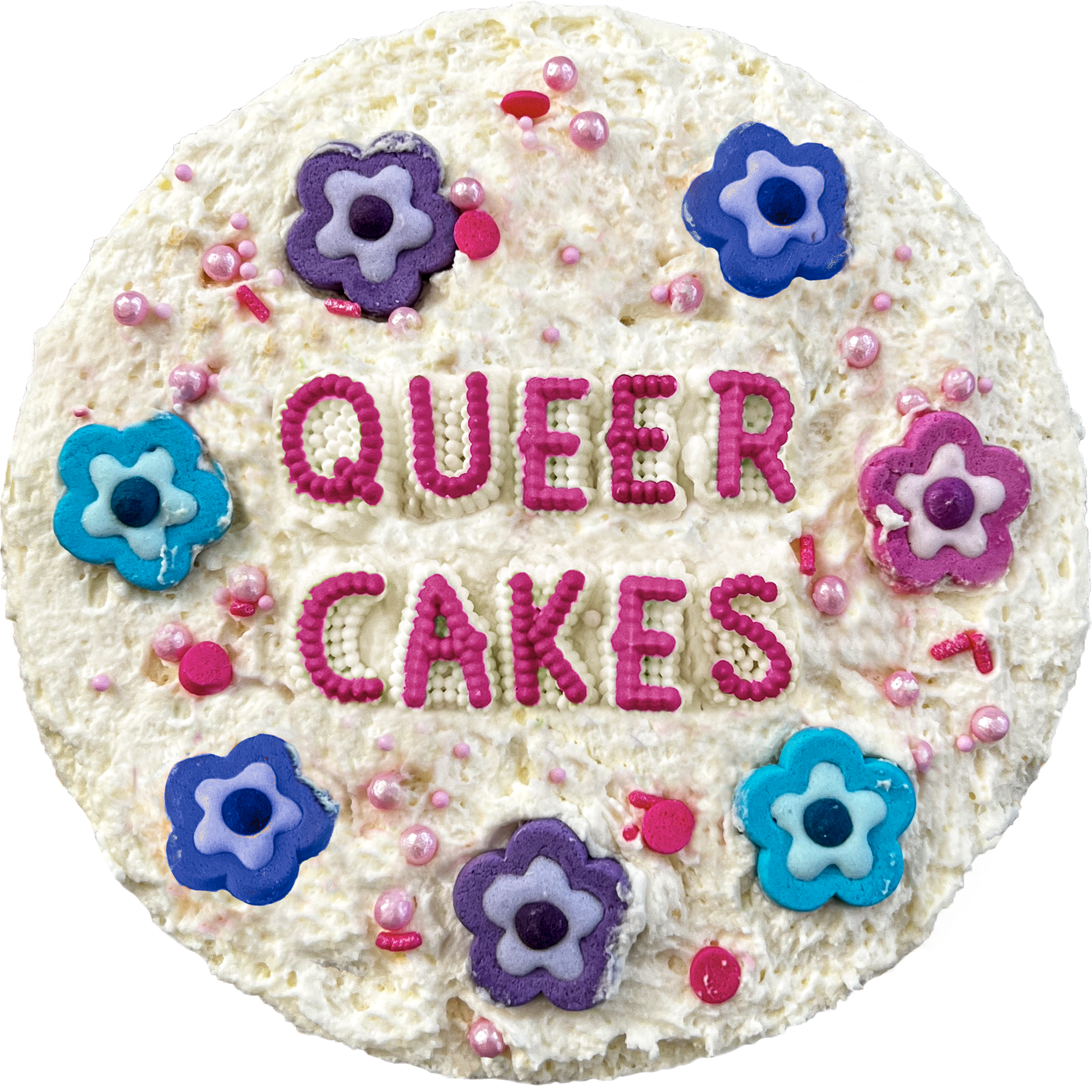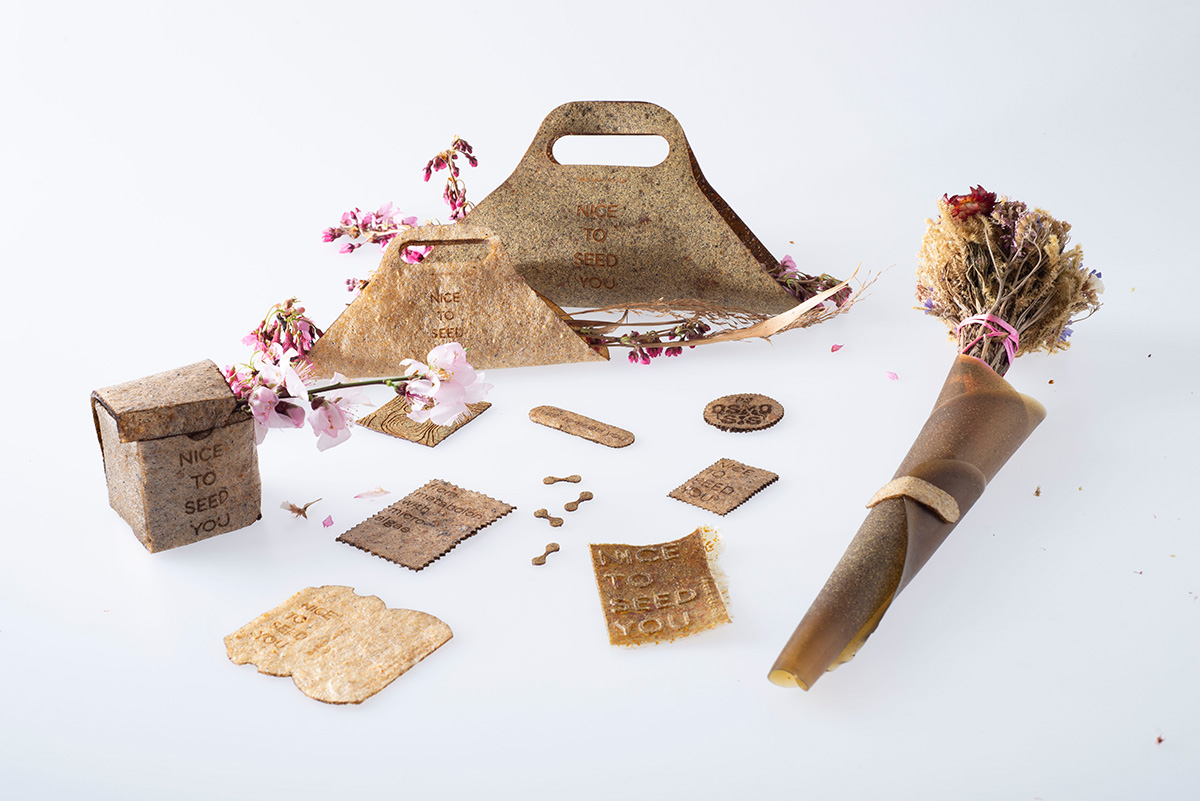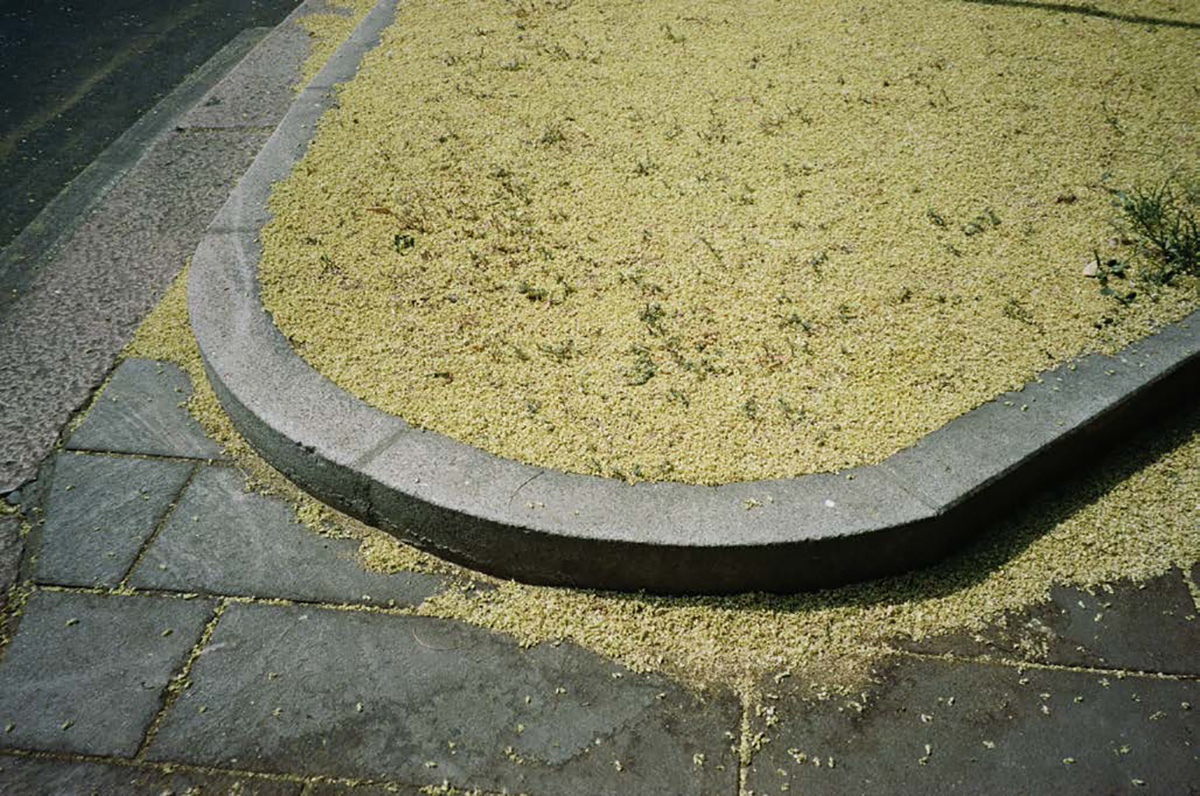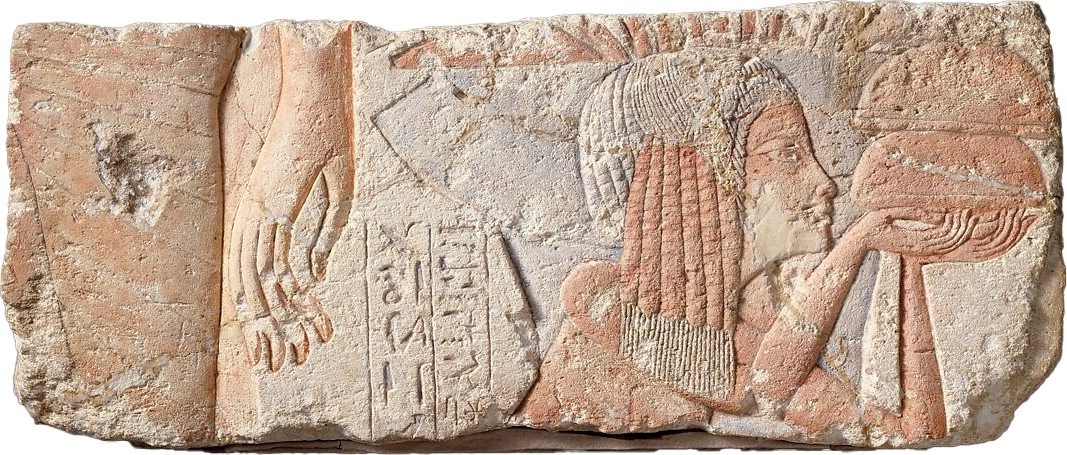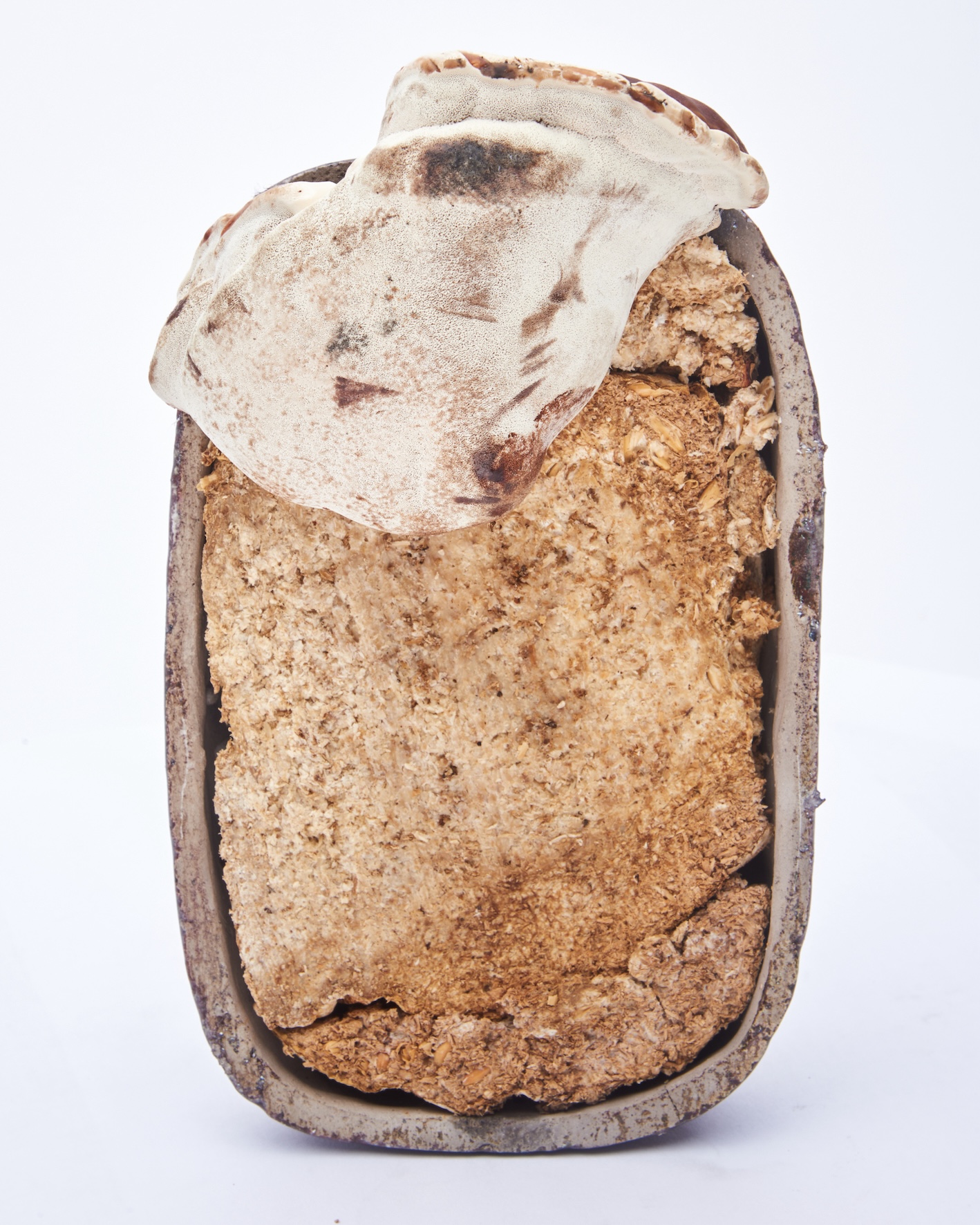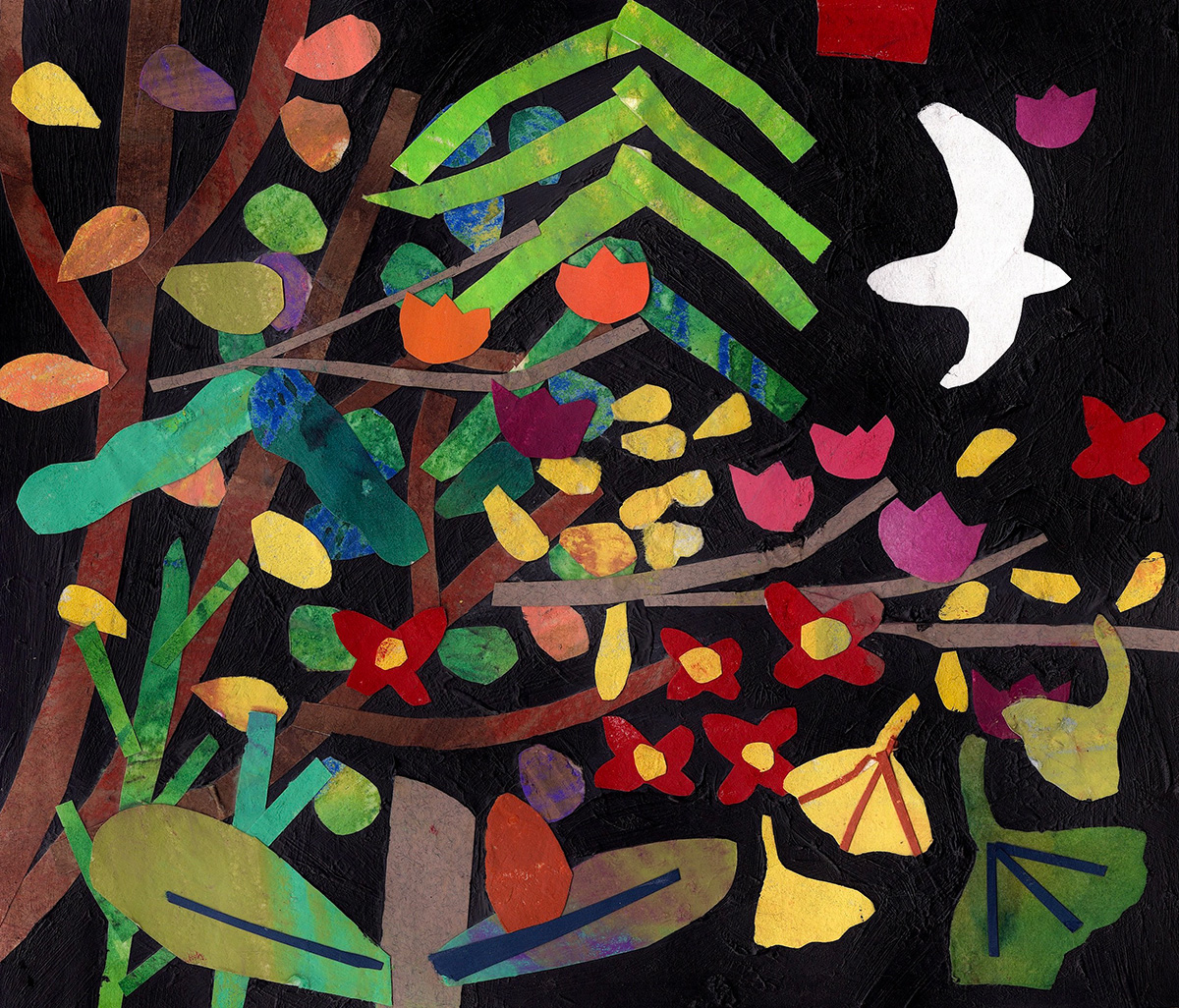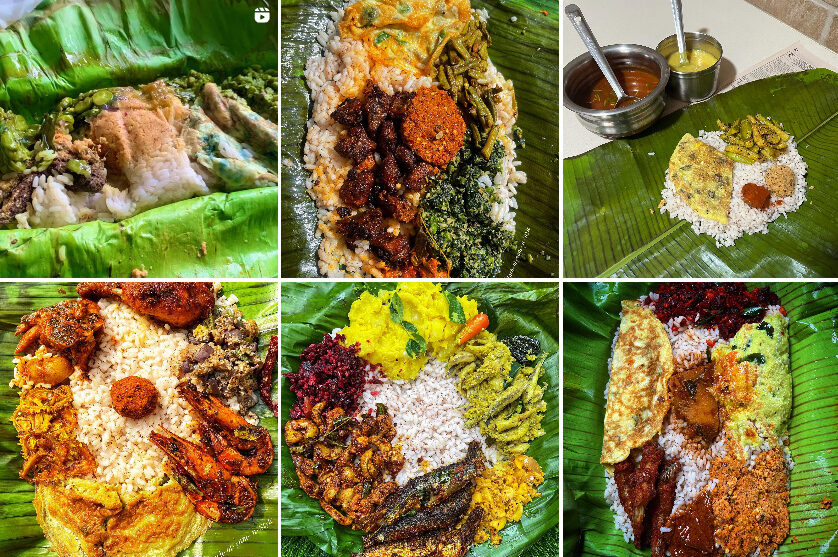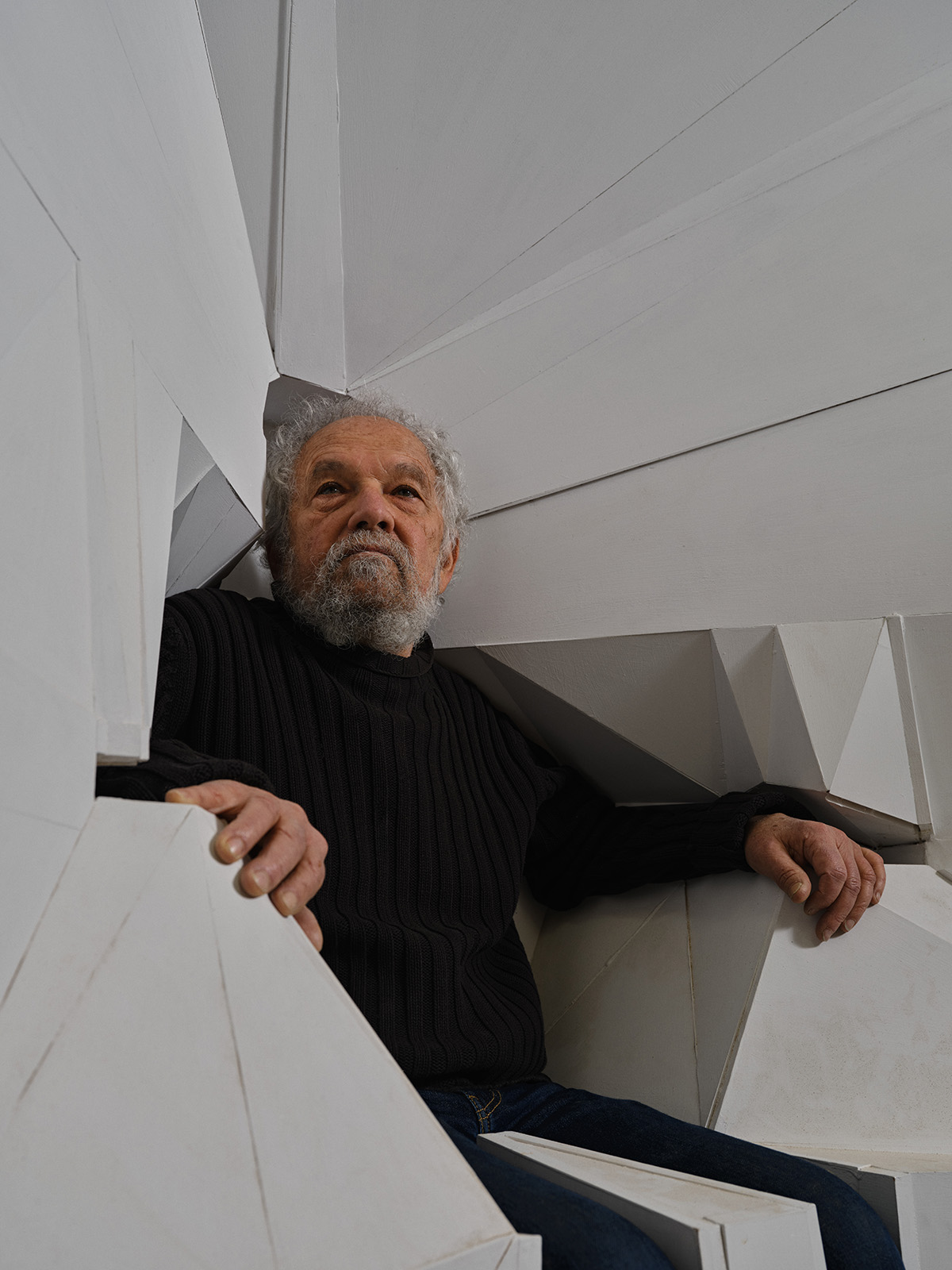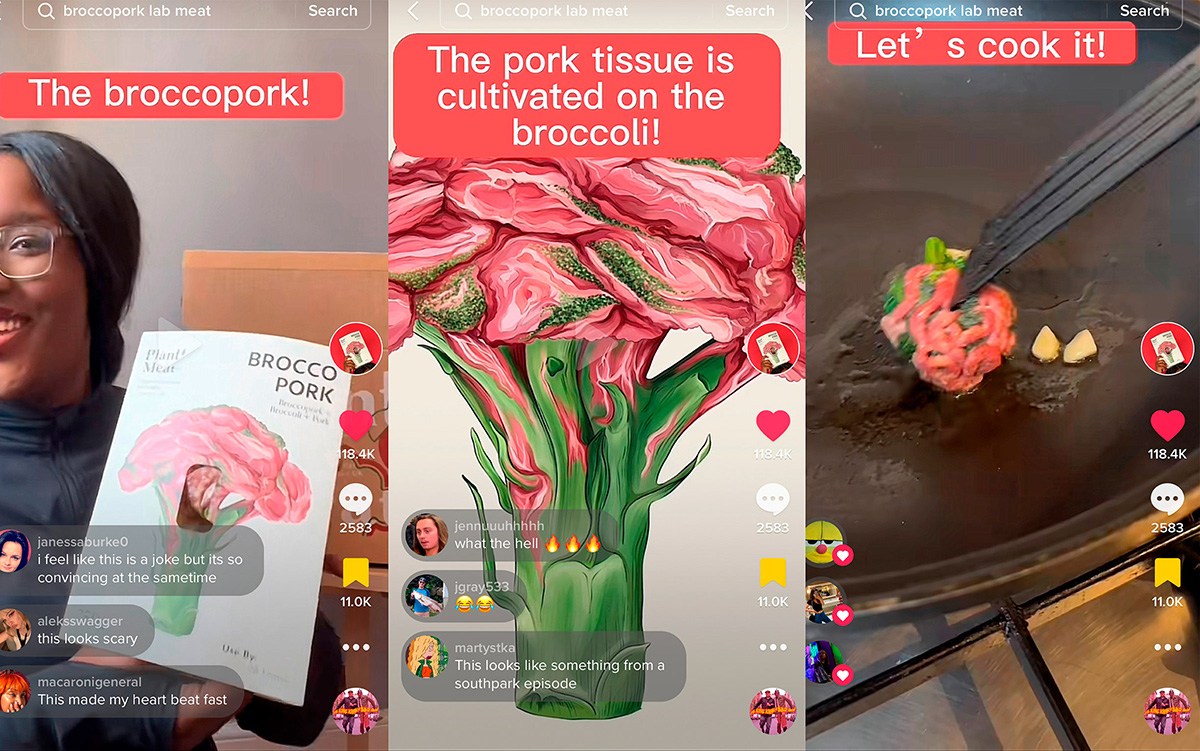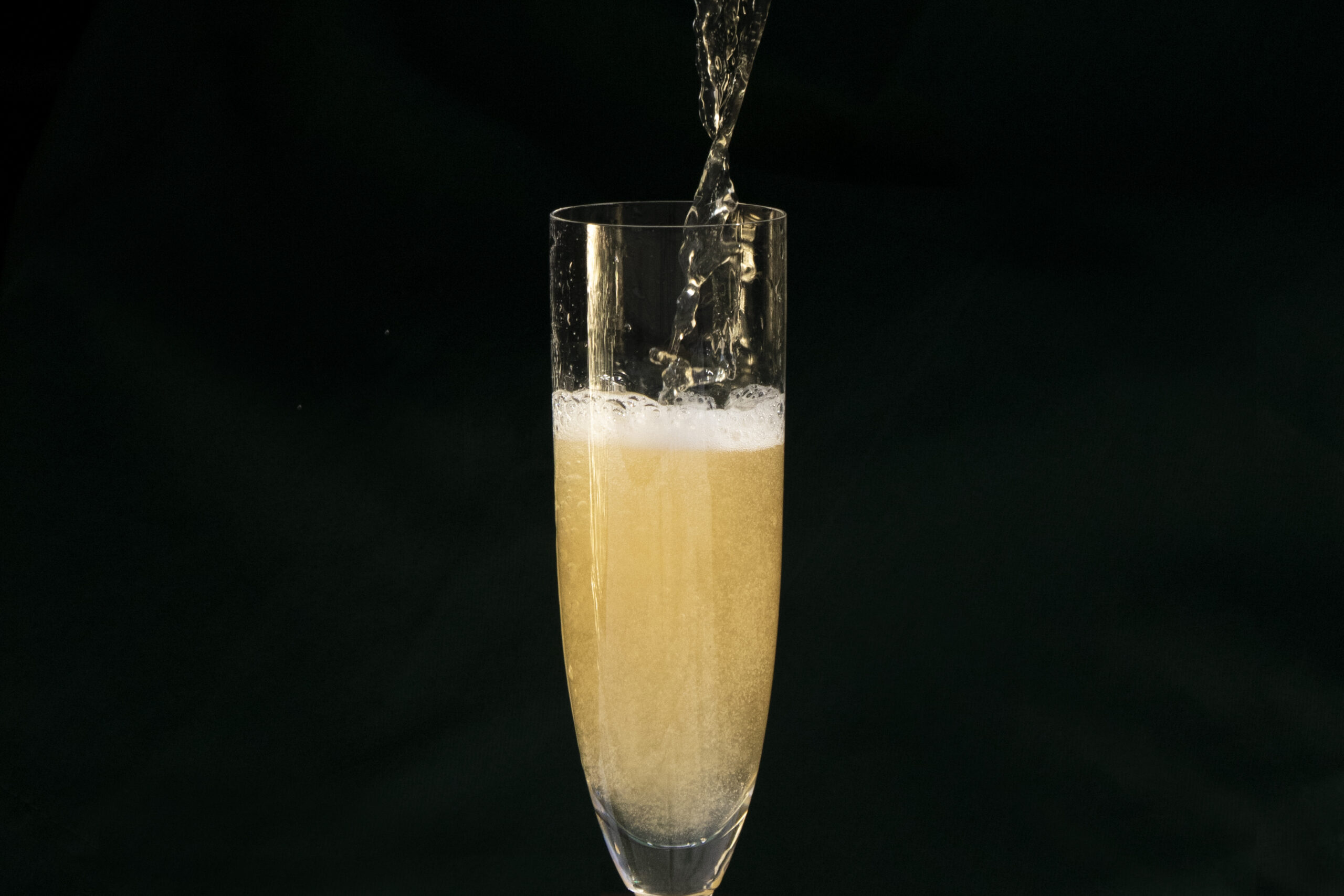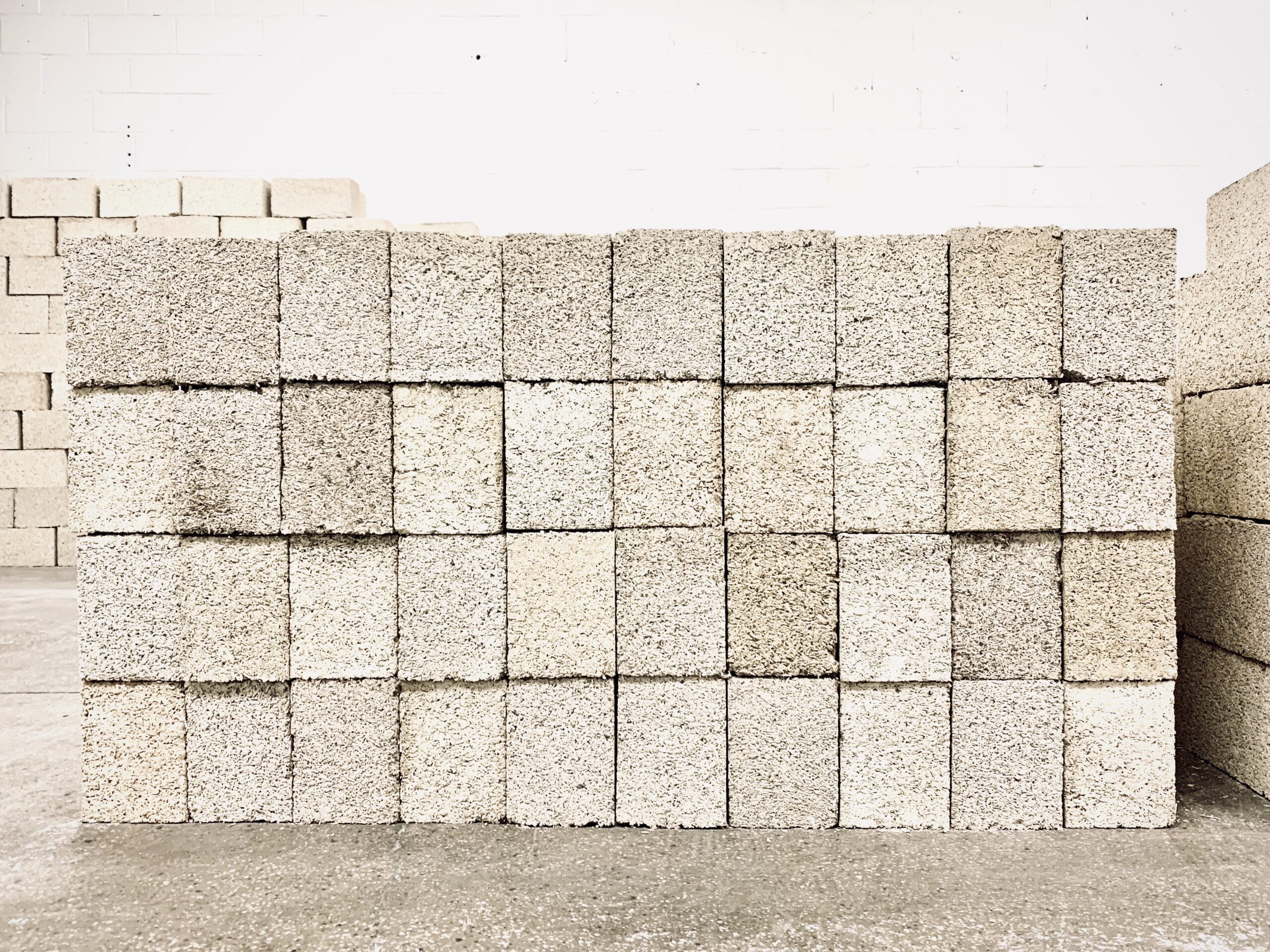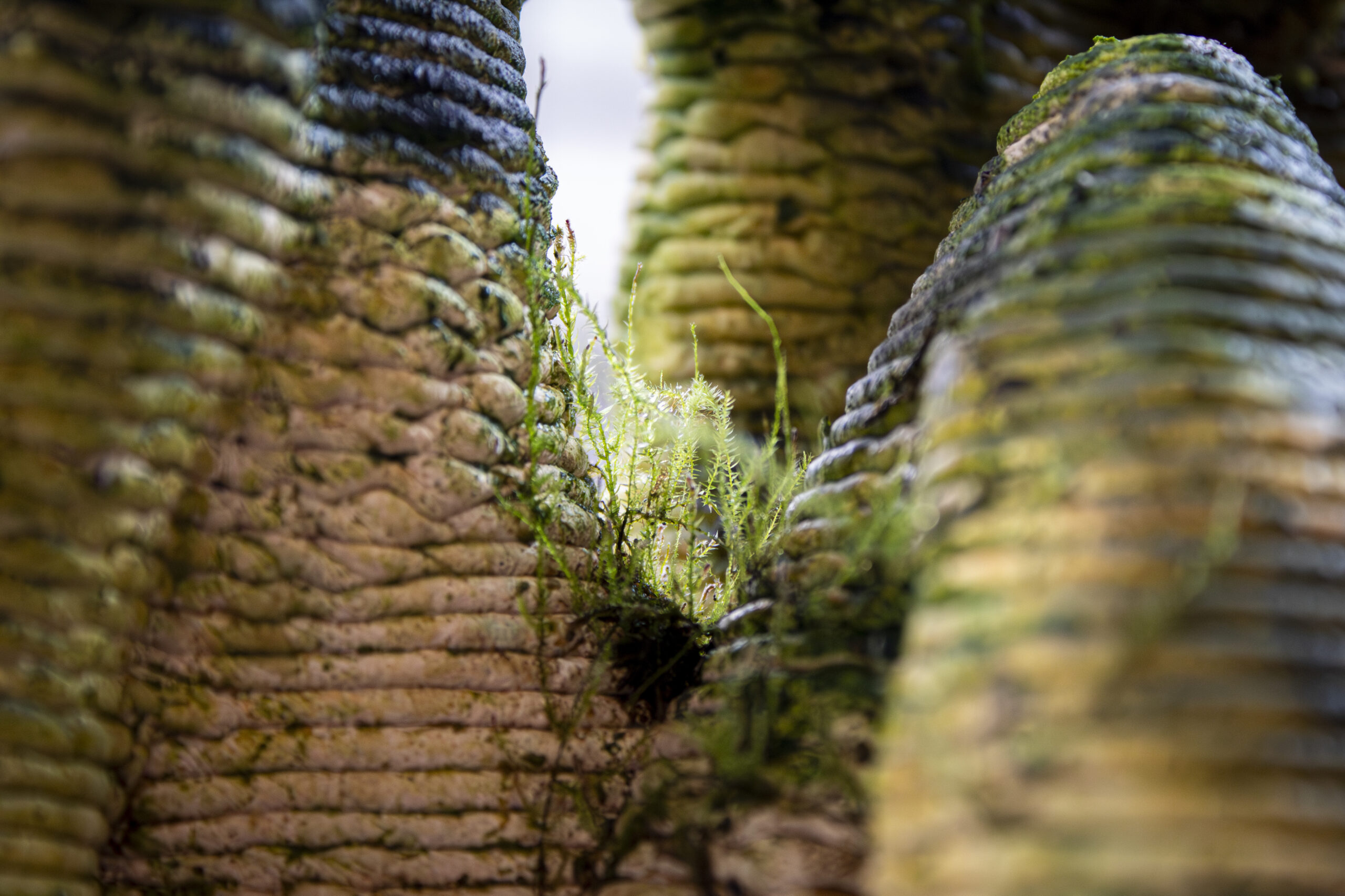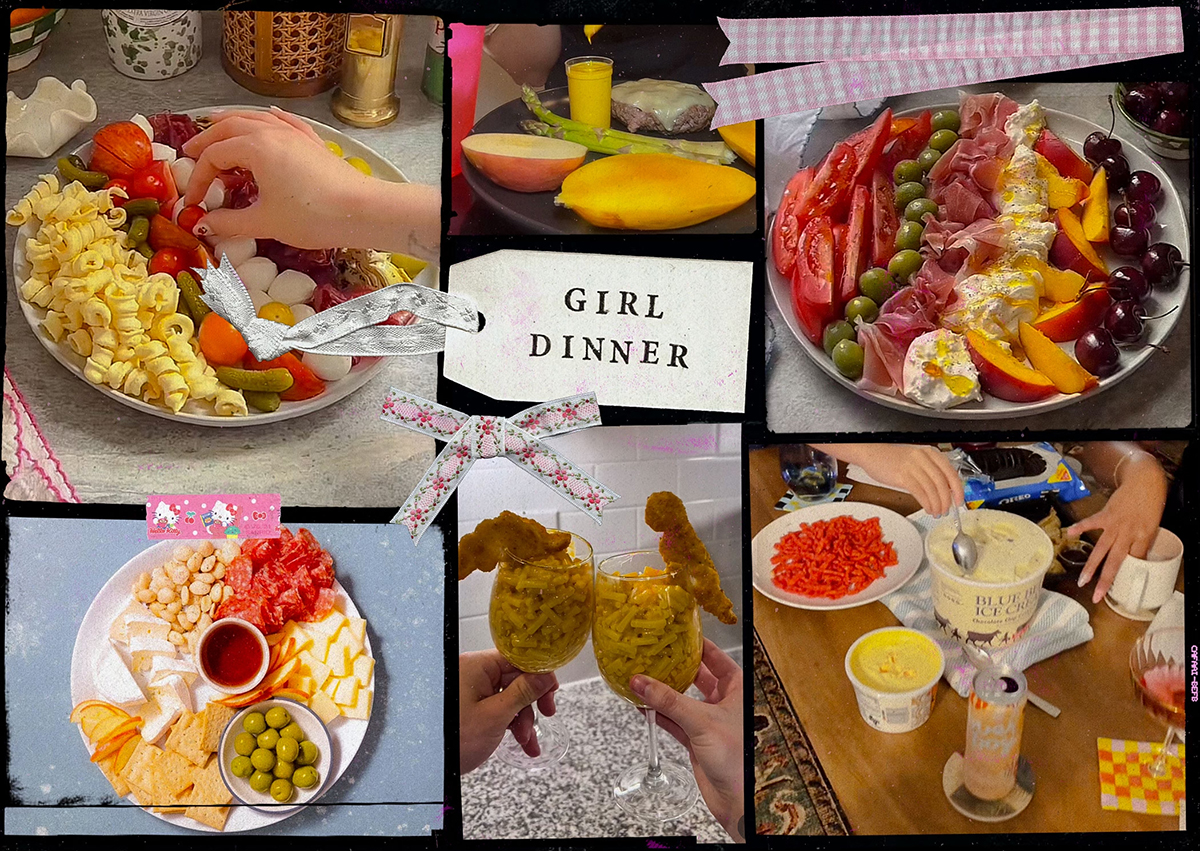In childhood, a cake was always a cause for celebration. Class birthdays, summer picnics, and Christmas signaled decadent layers of sponge cake adorned by dollops of sweet cream, strings of bright icing, and occasionally, chunks of tart strawberry or pineapple. My own birthday was always a triumphant affair—I remember the ecstatic joy I felt on my sixth birthday upon seeing my Bambi-themed birthday cake. The circular layer cake was topped with a plastic figurines of Bambi and Flower (Bambi’s skunk companion). Across its vanilla cream surface was an airbrushed, lush green landscape; a river of pellucid aquamarine gel icing swirling across its top. “Happy Birthday, Yume” spelled itself in pink, cursive, loops. Now, the cakes I eat in adult life feel awfully banal. For one, they don’t have my name on them. Predictably square, grocery-store sheet cakes, with their blank, white text-box surfaces, pale in comparison, devoid of the extravagance required of celebration. I miss the air of fanfare and extravagance around cake decoration.
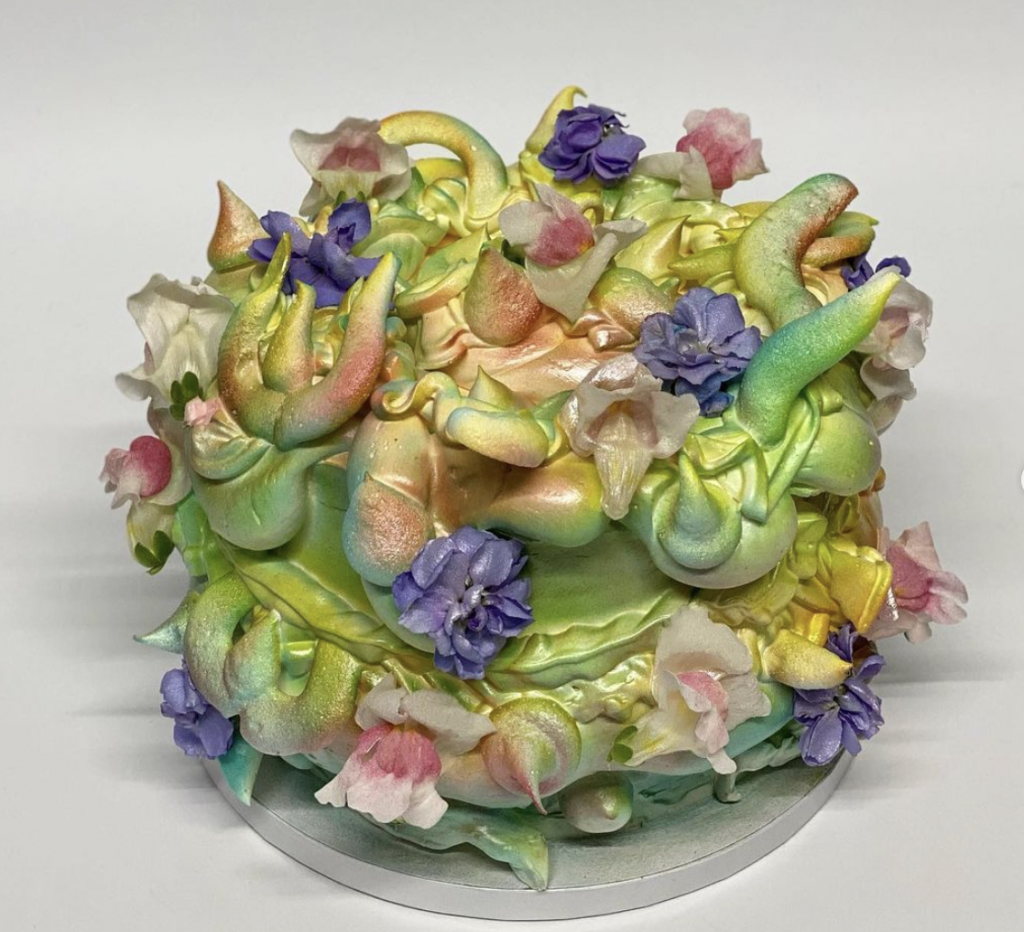
Yet, a certain decorative enthusiasm seems to be finding renewed interest online, conjuring a sweet sense of nostalgia across social media feeds. Unconventional cakes characterized by their decorative aesthetic—think organic forms, bright and fantastic colors, abundant adornment, and ingredients that seem to straddle intuition and serendipity—have become popular online, in art-adjacent spaces, and large events. Hana Betakova of @rustcakes, Amy Yip of @Yip.Studio_, Billie Belo of @Cakes_For_No_Occasion, and magnet of @heartshapedchain are among a group of very-online pastry-artists who are celebrated for their non-traditional cakes. This dessert trend has captured the attention of the media with publications like Edible Brooklyn attributing the move towards “chaotic” cakes to various theories that range from unexpressed erotic and platonic desires alike, to the rise in women bakers, and even the decreasing popularity of diet culture. While their approaches to cake decorating are, creatively, rather diverse, what these pastry-artists all have in common is that they’re all a part of the LGBTQ. The diverse range of styles presented by these cake artists points beyond an aesthetic trend, instead, they underscore how cakes as a medium can provide ripe, fruitful grounds for queer expression.
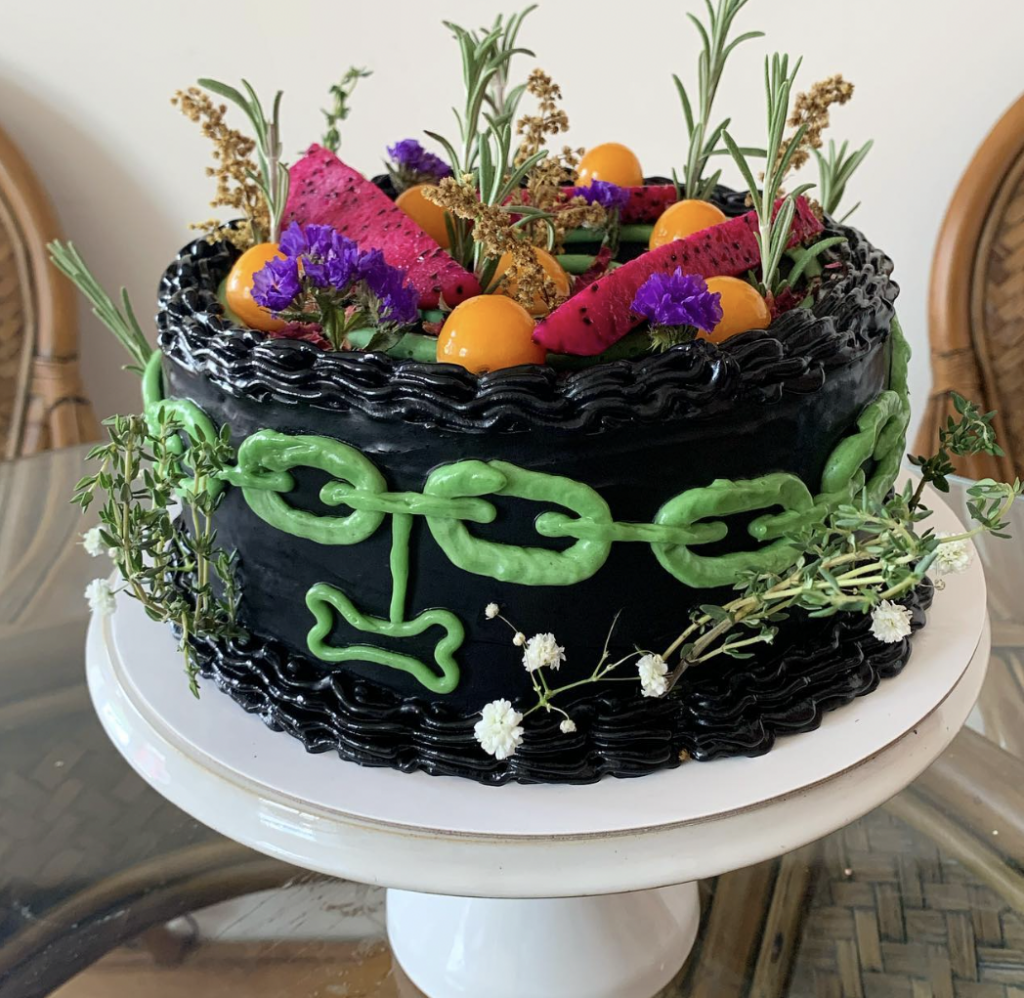
In a conversation with Artnet, Berlin-based baker Hana Betakova describes how as someone who doesn’t “see [themself] as someone inherently feminine,” the ethereal, fertile, bursting compositions, adorned by flowers and streaming pipettes of pastel cream she creates allow her to express herself creatively, free of any gendered impostions. For others, it presents an opportunity to celebrate queer community. Underneath a picture of a vanilla and black pepper cake with honey bourbon and molasses cream cheese frosting, magnet simply writes in their caption, “Every Day I Wake Up And Thank God For My Gay Hands And The Opportunity To Continue To Make Gay Cakes For The Gay Community.” While edible, these mouthwatering cakes also function as sculptural art objects, intended to be seen and to evoke beauty, memory, and emotion, particularly in queer loved ones. In creating these cakes, these pastry artists are turning away from, or subverting a tradition of cake decorating that dates back to the Victorian era — one that prioritizes order, conservatism, and symmetry.
In a three-part lecture series entitled “Sweet Series”—presented in conjunction with the Drawing Center’s Clamor of Ornament exhibition—multimedia sculptor, baker, and proud faggot Edward Cabral points to how cakes have served as spectacle, a reflection of it’s eater’s own culture and values—for better or for worse. In the series, which discusses the history of patisserie as it relates to the decorative arts, Cabral returns to the history of white sugar, using it to map the relationships between colonialism, architecture, industrialization, and the development of American desserts. According to Cabral, our relationship with cake has largely remained unchanged—while its overall aesthetic may evolve, it remains a frivolity.. His final lecture, speculates on the future of cake decoration, linking modern cakes to the rise of radical softness, which can be understood as an artistic and aesthetic movement where vulnerability and emotionality are used as a tool, rather than seen as a weakness. In a recent phone conversation, the pastry connoisseur broke it down for me:
White sugar, white supremacy, it’s all the same. There is no dessert without it. The decorated cake is a symbol; it’s the embodiment of white supremacy and colonialism. The idea of whiteness as virtuousness, and the reason we have the white wedding cake is Queen Victoria. And we still have white wedding cakes because of her influence throughout the world. […]
As Edward describes, the history of modern cakes and their decoration is one that’s deeply rooted in white supremacy. The enslavement of West Africans and theft of goods across Africa and the Americas created the kinds of surplus in Europe that enabled a dessert culture to take effect. By the 18th century, sugar cane plantations, whose operations were entirely dependent on slave labor, could be found in European colonies throughout the Americas, which had become the predominant supplier of sugar to Great Britain. It was at this time that white sugar became immensely popular as Britains acquired a sweet taste for tea, jams, and chocolate—much of what is now foundational to British tea time. Despite lacking the nutritional content of brown sugar or molasses, white sugar was more profitable for its refinement and long shelf-life. In European ads, markets, and high society, the color white became analogous with goodness and purity, increasing the product’s popularity as a symbol of luxury. The extraction of sugar from European colonies made a taste for sweetness a commodity that even commoners could buy into.
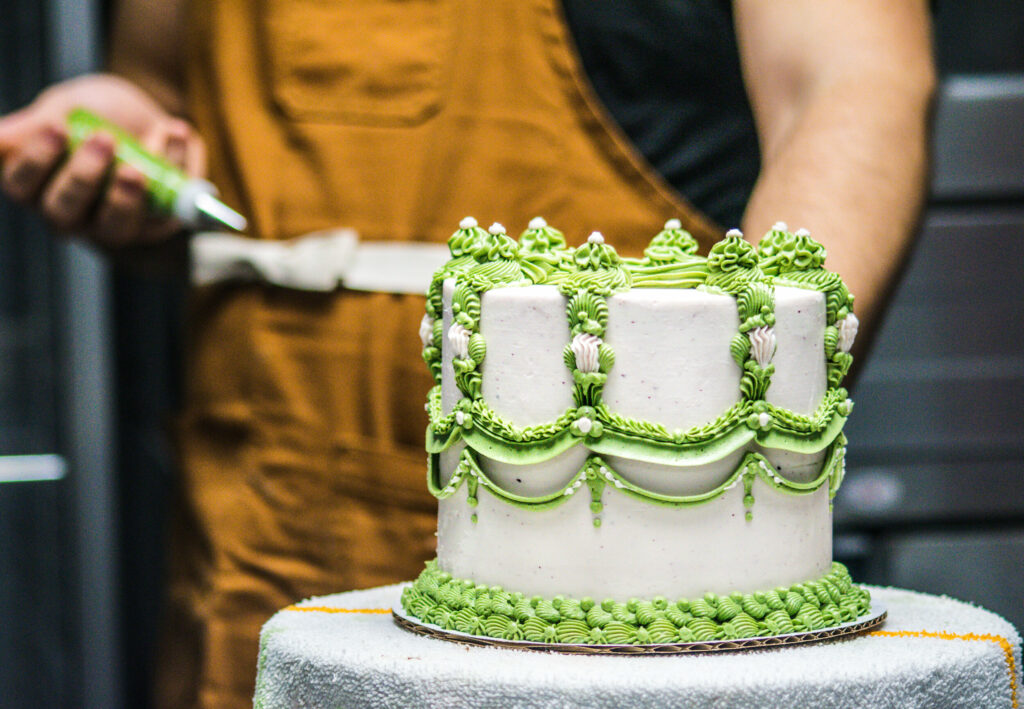
Still, cakes remained a luxury indulgence for the upper echelon. In 1840, Queen Victoria’s wedding cake signaled a departure in how sweetness could construct beliefs around identity through spectacle. Her lily white wedding cake weighed 300 pounds, was 14 inches tall, 10 feet in circumference, and decorated with sculptures of Britannia. Cakes were a vessel for not only the selling of white sugar, but purity as a moral quality and whiteness as a cultural identity. Really the antithesis of any kind of queer or radically soft aesthetic approach. That the Victorian-look of traditional cakes have prevailed is a testament to white supremacy is no exaggeration.
If we’re nostalgic for both a distant past and some semblance of authenticity, can we achieve reclamation through food in adulthood?
Today, queer artists and bakers are reclaiming the cake form, using simultaneously defiant and emotionally-charged cake decorations to reflect their own worldviews. Away they turn from seamless fondant, carved sponges, smoothed buttercream, and uniform, symmetric ribbons of piping. In his Substack newsletter, “Shifting the Food Narrative,” writer and former chef John Birdsall considers the relationships between queer identity and taste memory. In a two-part essay, “Food Nostalgia and Queerness,” Birdsall suggests a nostalgia for childhood recipes could bring about a reclamation of recipes contextualized by their own pasts, complicated by fatphobia, homophobia, and racism:
Is there a way of reinterpreting the foods of our past on our own terms, in resistance to the toxic norms they represent? Can we reject, in Boyim’s terms, the restorative nostalgia that the past can demand of us, and instead re-create the dishes and food life of our past in gestures of reflective nostalgia, wistful for the traditions they connect us while staying true to who we are, as evolved adults, in control of our lives?
If we’re nostalgic for both a distant past and some semblance of authenticity, can we achieve reclamation through food in adulthood? All of the discussed pastry artists bring some aspect of their personal histories into the cakes they bake, whether it is introducing forms inspired by nature and childhood or experimenting with non-traditional ingredients from their own upbringing or locale. Amy Yip’s unique carved & mossy rock cakes, pay homage to her upbringing in New Zealand as well as her Chinese and Vietnamese heritage with ingredientslike Vietnamese ice coffee to oolong rose that reflect her own cross-cultural culinary palette. In an interview with Office magazine she reflects:
Growing up in New Zealand, access to Asian flavors was pretty limited, except for maybe in the city. It was always a treat when my mum had the right ingredients to make Vietnamese, Chinese, and Thai desserts. I wanted my menu to reflect some of the flavors from my youth.
While the baker is now based in New York, she references organic forms such as rocks and flowers she has been fascinated by since her childhood in New Zealand. Brazilian-born painter turned pastry chef Billie Belo got her start baking cakes for friends at Lil’ Deb’s Oasis, a queer food and art space in Kingston, NY. Belo, who calls her surrealist pastry works “Abstract Expressionist cake experiences”, takes on a painterly approach to her neon-colored cakes by using a palette knife to smear frosting. Employing spots, stripes, and dribbles of icing, Belo intentionally strikes out against refinement and decency, opting for a style of decor that prioritizes letting streams of icing and cream bubble, slope, and spill as they naturally do, to an almost childlike effect (think Dr. Seuss on acid). Magnet’s baked sculptures turn the Victorian form on its head offering creations that parody traditional Lambeth cakes—pastel and neon palettes converge, while imperfect rows of brightly colored piping verge on excessive, if not abundant. Peppered with stone fruit, herbs, and flowers, the cakes are a display of lushness that feels almost erotic. In a caption reflecting on their cake practice, they share that they’ve “been thinking about eating as a means of exploring desire and distancing [themself] from shame.” In this sense, cakes become a symbol for self-love, reclamation, and queerness.
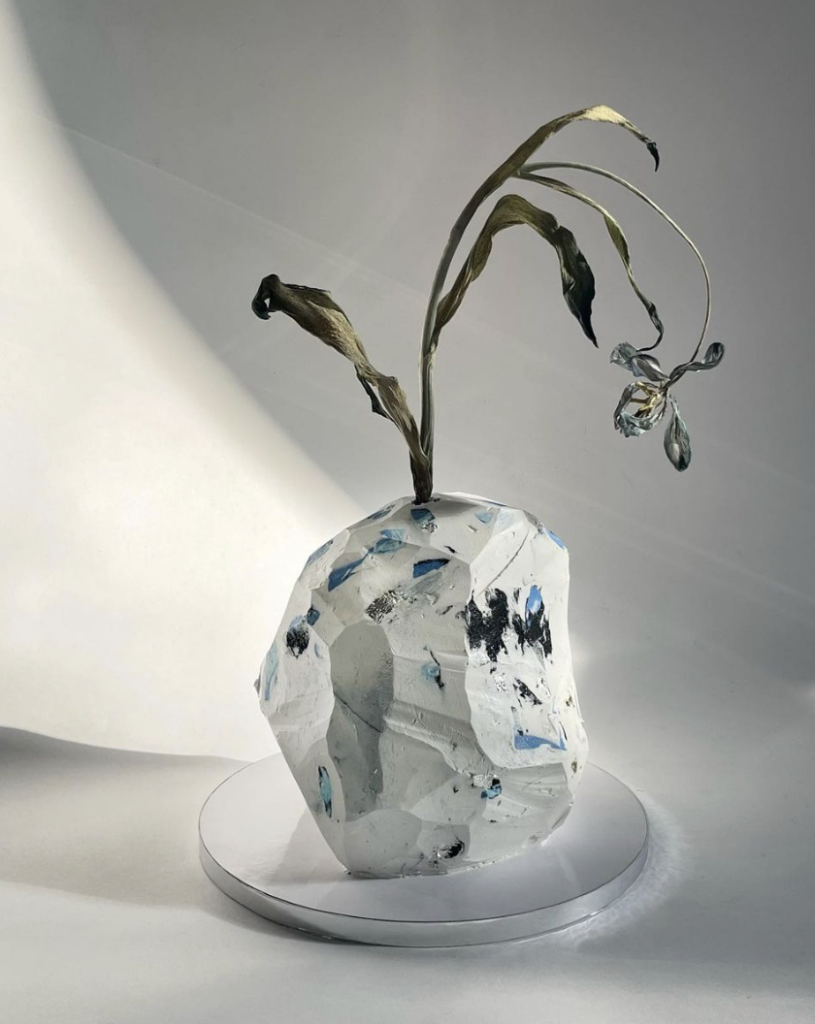
These bakers offer vulnerability and honesty where tradition has demanded constraint and detachment, expressing love and while simultaneously rejecting problematic conventions baked within centuries of cake decoration. Not only are they reclaiming cake, they’re eating it too. The way they like it.
For Cabral, as I would assume for many queer pastry artists, cake feels special for these very reasons. Many of the bakers discussed here rose in prominence within the early throes of pandemic, largely because cakes reemerged an a safe and accessible way to make socially distanced gatherings feel more ceremonial, celebratory even. At a time when many of us retreated into nature, returned to our sourdough starters, and stepped more deeply into our bodies, we found solace in creating things on our own terms. Baking goods for loved ones became a simple and heartfelt vessel for acknowledging the world around us, while remembering there was still cause for celebration and joy. At their heart, queer cakes do this. They remind us of the endless potential for re-emergence at the end of the world.
**Editor’s Note: The original version of this text contained two egregious mistakes: it used a previous pseudonym that magnet worked under and also misgendered them. Our apologies for not catching this in our editorial process**
